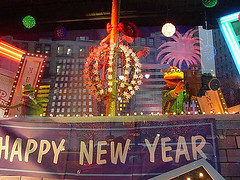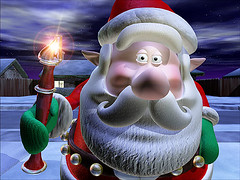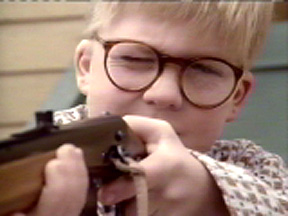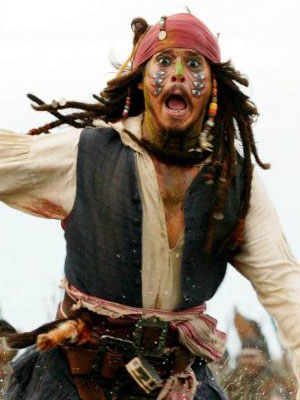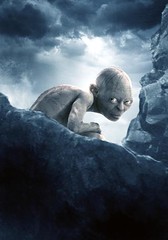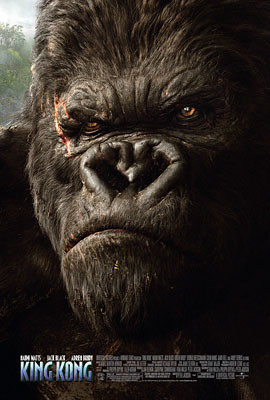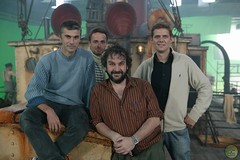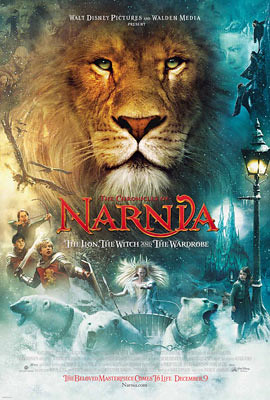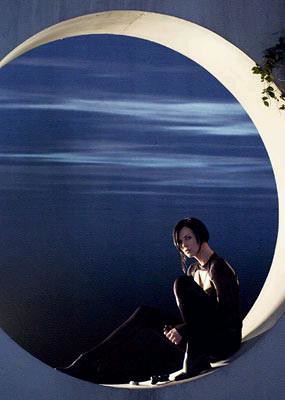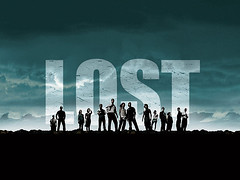After sitting in a dark theatre for two hours and twenty five minutes (not including trailers mind you), I was able to come to my own conclusions about the much anticipated/lauded/maligned Chronicles of Narnia.
ZZZZZZZZZZzzzzzzzzzzzzzzzzzzzzzzzzzzzzzz.
If ever there was a candidate to love this film, it would have been me. I was enthralled by the books when I read them years ago, and I love big Hollywood Special FX spectacles particularly in the fantasy genre.
What more could a girl ask for, right?
Wrong. For starters, the key element in my enjoyment of a movie resides in the characters. If I can’t get emotionally invested in what’s going on, on screen, I’d just as soon be watching a sports event between two teams I’ve never heard of. The lack of character development, chemistry between the actors, and general performances really hindered TCONTLTWATW (The Chronicles of Narnia: The Lion, The Witch, and The Wardrobe). People often point out how difficult it is to find young actors who can act. This film is a testament to that theory. The story revolves around the Pensieve children; in descending age they are Peter Susan, Edmond and Lucy. Peter is about fifteen, and Lucy is nine, the rest fall somewhere in between. Lucy, the youngest, probably had the most to do in the film. She had a sweet face and an endearing way about her, but even she came across awkwardly in some scenes, and the rest of the youngins’ did not fare better. Edmond, the sulky trouble maker, relayed his mopiness by mugging exaggerated frowns and stomping on the ground. Susan played responsible to the point of brittle and Peter was “valiant” to the point of obnoxiousness. These performances were lacking any of the subtleties that make performances good, and even if one was to say in their defense that they are young kids, I would point out that the young actors in the Harry Potter films do a far better job than the ones in TCONTLTWATW.
But it’s not really the poor children I blame. This is what happens when you put a director, who’s never done a live action film before behind a multi million dollar FX film. Director Andrew Adamson had only directed Shrek 1 & 2, and oh, “Shrek in the Swamp Karaoke Dance Pary”. (I’m not
kidding ). Now Disney may have thought they were making the right move because Adamson had experience with digital animation and CGI, etc., but it seems to me what they really needed was a director who had experience drawing good work out of actors. For example, look at Warner Brother’s choice of Alfonso Cuaron to direct the third Harry Potter film, Prisoner of Azkaban. His last film had been an erotic drama in a foriegn language, and he had never done a big FX movie before. But it worked out really well because he knew how to work with actors and create nuances in their characters, (not to mention the fact he had actually done a live-action film before). As for the rest of the performances, I think the more seasoned actors did a bit better. Tilda Swinton did a solid job as the evil and frosty White Witch, but I also think she’s also great in everything. James McAvoy, an obscure Scottish actor did a nice job in bringing warmth and charisma to the quirky role of Mr. Tumnus. But nothing could really repair the lack of disunity that came across among the children.
The very first shot of the film is a spooky, murky, grim image of war planes flying over England, as another air raid begins. The Pevensie children, Peter, Susan, Edmund, and Lucy along with their mother, are fleeing to their bomb shelter in the middle of the night. Edmond, being the “naughty” boy he is, runs back to the house to grab a picture of dear old Father who has gone off to battle himself. Peter has to go in after him and drags him back to the shelter chastising him by yelling “why can’t you just do what you’re told.” (Needless to say this will be a running theme in the film.)
The next thing we know the children are being whisked away to the country on a train, so that they are not endangered by the constant bombing in the city. It’s amazing that for a movie which felt so interminable and draggy, the beginning still felt rushed and abrupt. Mrs. MacReady, a cranky housekeeper picks the kids up and brings them back to a mansion where Professor Kirke resides. (Just who these people are, and why the kids ended up at this particular house is completely unclear) The mansion is big and fancy and Mrs. MacReady is fussy, so no order of rambunctious playing is allowed. The kids are bored and sit around dejectedly. There are several scenes where Edmund says the wrong thing, and all the other kids yell at him for being a jerk. Thinking back on it I’m boggled by the scenes in the first act of the film. They managed to feel boring and obvious while doing very little to further along the characters, or the relationships between them. Everything felt like it was done in very broad strokes and there weren’t any intimate moments or small exchanges. It was like I was watching a play from the nosebleed seats and the people putting it on wanted to make sure all the gestures were big enough for me to see, despite the fact I couldn’t really tell what the hell was going on.
At long last Lucy unveils the magical wardrobe and stumbles into Narnia. Which brings me to my next point. While I liked the simple design of the lamppost in the middle of the forest that we see Lucy run to, there wasn’t much that felt magical to me about Narnia. In fact, Narnia felt a lot to me like New Zealand, which in turn made Narnia feel like a faded, jaded Middle Earth. The forest was just a forest. It didn’t look like there were any sort of digital FX added to the landscape, and it seemed really plain. Now maybe this was what Adamson was going for. He wanted the audience to feel that Narnia was desolate and bleak since the White Witch had come into power. But in other Fantasy films that depict wastelands, be they Lord of the Rings, Never Ending Story, Legend, etc., evil, scary, or dreary places, still have a certain fairy tale look to them. A certain stylization that makes them feel magical, and/or mysterious. I really thought Narnia was lacking a lot of this, and the outdoor sets often felt like the woods behind a well kept summer camp.
But back to the kids and the main plot. So Lucy falls upon Narnia and meets Mr. Tumnus, a friendly Fawn (part human, part goat) who invites her back to his home for tea, and then confesses he has tricked her and intends to turn her into the White Witch. The White Witch, who calls herself the Queen of Narnia demands that all humans found in the land be turned over to her stead, yet why, we don’t know quite yet. Lucy convinces Tumnus that he should do what is right and follow his heart, and he easily caves and rushes her back off to the wardrobe so that she can return to her world. Lucy tells her brothers and sister but they don’t believe her, until they actually stumble into Narnia themselves. Edmund meets the White Witch on his own and accidentally tells her that his sister has met Mr. Tumnus. When Lucy brings the rest of the gang to meet Tumnus, they find his home ransacked, along with a notice left by the witch saying he has been captured and is being held for high treason.
At this point in the film I was already feeling weary. The problem was I didn’t really care about any of it. I felt as though I knew very little about these kids, except for maybe some very general characteristics, and Mr. Tumnus was nice and all, but no one to go risk your life over. Certainly not after he almost turned Lucy in. I couldn’t really see why the kids wanted to stay there –Narnia was no Wonderland, and it didn’t seem very exciting.
Then came the talking animals. That’s right talking animals. Now, it has been a frightfully long time since I’ve read the books, and I remember that Aslan the lion spoke, but I didn’t remember the bevy of beavers, wolves and foxes chattering away. All of these characters were animated w/ CGI and at times looked good, at other times fake, but overall had the effect of making the film seem like a young kids movie. And when I say young kids movie, I mean one of those movies where the animals talk to each other like Homeward Bound II: Lost in San Francisco. I didn’t much care for it.
Also I don’t recall the plot of the story in the book being that confusing. As put forth by the film adaptation, the children are fleeing from the White Witch because she wishes to capture them in order to…kill them? It seems some time ago a prophecy was declared which stated some hookey unclear message, that when four humans arrived in Narnia, they would join together with Aslan, the former King of Narnia, and overthrow the Witch and her regime. Just who Aslan is and where he came from is unclear. All that we know is that he is “on the move”. It’s also unclear if the Witch is human herself.
Now there has been a lot of critique regarding the film being a blatant bastion of Christianity, being that Aslan represents Jesus. Some people find this offensive and over the top. But that is not what bothers me about this film. Certainly I can understand that not everyone would want to go see a film that promoted Christianity, yet I still believe it is legitimate for a film to express a particular religious perspective. What I did find offensive, and even morally irresponsible, considering the way the film was marketed to children’s Sunday school groups etc., was the role that violence played. Now, I’m not one of these people who thinks violence in movies rots out children’s minds. But I do think there was a sinister context to the violence in TCONTLTWATW.
When Aslan is sacrificed by the White Witch, and word of this terrible news is brought back to the encampent of his followers, they take up arms and go to battle the Witch and her minions. To me the implications were that of a holy war, or crusade. I found the images particularly disturbing since Peter, the eldest of the Pensieve children, but still no more than fifteen or sixteen, led troops into battle. His sword of justice was slaying the “disbelievers” who follow the Witch instead of Aslan. Edmund, no more than twelve, had also donned armor and ridden into battle. Under normal circumstances, I would be complaining at the injustice of Susan and Lucy being left behind to mourn over Aslan’s corpse –their brothers getting to brandish weapons, while they are left to hug a dead stuffed animal. But in this case, I really didn’t think any of them should be fighting. Again, it’s been so long since I’ve read the book I can’t remember how much of this was in the book as well, but I think the filmakers made a strong choice to accentuate battling for one’s “faith”. No matter what one’s faith is, using it to justify violence is treading on dangerous territory, and the film didn’t even try to address the complex layers of this issue.
Were there neat things about this film? Sure. I though Aslan looked really great. I thought the wildcats running to attack each other on the battlefield looked cool. Tilda Swinton as the White Witch had good costumes. But overall it was a real snoozefest. Beyond that I just didn’t buy into anything that was going on, on screen. Edmund’s transformation from sad sulky embittered youth, to happy, nice courageous lad felt fake and force, and I didn’t feel as if any of the other children really underwent changes, besides “growing up” a bit. Other questions remain unresolved in my mind too. If Aslan is the true king, why were the kids crowned as the rulers of Narnia? I remember feeling like the book made sense as a child, but I found the movie had large gaps in logic. Also though I know I shouldn’t have, I kept comparing the film to the Lord of the Rings Trilogy, and frankly it came up very short. In LOTR: Return of the King, when Theoden gave a rallying speech in front of his Rohirim before battle, it felt passionate and emotional. But when Peter asked the Centaur next to him, if he was with him till the end, I asked myself who the hell he was talking to. LOTR just created such a sense of emtional urgency with its characters and the stakes at hand. I did not feel the same about TCONTLTWATW.
All in all, this film was a disappointment to me. I wonder how the next one will be, I know they’ve changed the order that one reads the books in school, but I wonder in what order they’ll be shot. Truth be told I always found Prince Caspian to be a little boring….
